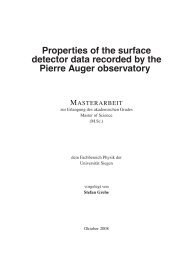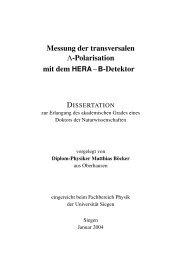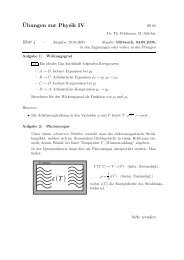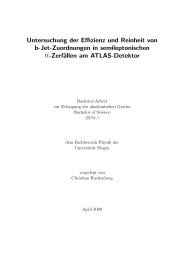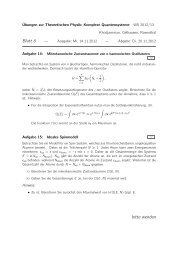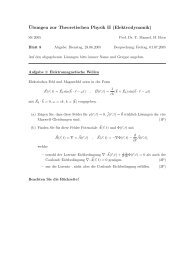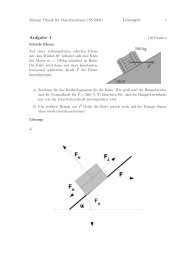Feynman Diagrams For Pedestrians - Herbstschule Maria Laach
Feynman Diagrams For Pedestrians - Herbstschule Maria Laach
Feynman Diagrams For Pedestrians - Herbstschule Maria Laach
You also want an ePaper? Increase the reach of your titles
YUMPU automatically turns print PDFs into web optimized ePapers that Google loves.
1 Introduction1.1 Scattering AmplitudesBasic principle of quantum mechanics• an accelerator prepares an initial state |in〉• that is transformed by an interaction S• and a detector measures the overlap of the resulting state with a final state |out〉.• the transition probability P is given by the absolute square of the transitionamplitude AA in→out = 〈out S in〉P in→out = |A in→out | 2• if the initial and final states |in〉 and |out〉 are not pure states, the correspondingtransition probabilities must be added (e. g. spins and flavors) or integrated(e. g. angles, energies and momenta)Task(s):1. describe |in〉 and |out〉:• pure states: completetely polarized electrons, muons, photons⇒ Dirac equation, Klein-Gordon equation, &c.• mixtures: protons, partially polarized or unpolarized electrons, muons,photons, . . .2. compute S (i. e. the part of S that contributes to 〈out S in〉)• quantum electro dynamics (QED)• quantum chromo dynamics (QCD)• standard model (SM)• “new physics”, “beyond the SM” (BSM)⇒ <strong>Feynman</strong> rules3. square A in→out and integrate P in→out• Monte Carlo1(1a)(1b)



